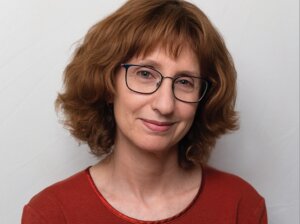Doing It for Themselves: Synagogue Sisterhoods Come Into the Future
At synagogues across the country, the women who have been filling the ranks of sisterhoods and doing the bulk of volunteering have been looking behind themselves and seeing… no one. These older women have raised millions of dollars and organized countless events. Yet the younger women around them, even those who attend services regularly, simply are not joining.
“When we moved here 10 years ago,” said Roslyn Citronowicz, a 47-year-old former sisterhood president of Congregation Beth Sholom in Clearwater, Fla., “I signed my kids up for the Hebrew school and decided to join the sisterhood so I could meet people. But today, because many of the congregants’ children attend Solomon Schechter instead of our Hebrew school, some of their mothers are saying they’re too busy helping out with the day school to take part in sisterhood activities.”
Citronowicz’s lament is being whispered at sisterhoods all over the country. Last spring, the Conservative Synagogue Adath Israel of Riverdale, N.Y., decided to address the issue head-on and invited older sisterhood members to meet with young female congregants who participated in other synagogue activities, notably the popular Young Children’s Family Program, where Lisa Epstein, an expert in modern Jewish history, explained why the sisterhoods are not attracting young women.
According to Epstein, in the first half of the century, most women were homemakers, and the sisterhood offered a way out of the daily cooking, cleaning and child-care chores. As these women participated in lectures, classes, recreational activities and fund-raising campaigns, they relished the chance to work together for a common goal and, not incidentally, to cultivate lasting friendships.
Plus, belonging to a sisterhood provided talented women an opportunity to be elected to president, treasurer and other esteemed positions, in a time when society as a whole (including the synagogue itself) only considered men for those positions in most social, political and religious organizations (including the synagogues). These women saw their work in the sisterhood as a sort of sacred mission, not unlike prayer itself.
By 1990, however, Epstein noted, more than 50% of Jewish women had a college degree, compared with only 17% of other Caucasian women in America. As a result, 73% of married women and 83% of divorced women had full-time or part-time jobs, which explains part of the reason that women have little time to participate in sisterhood activities. Also, many activities take place during daytime working hours. This is a particular problem, since older women often prefer not to go out at night.
Another reason that working women are more stressed today is the problem of finding good child care. (Epstein noted that baby sitters have the second-highest turnover of all jobs, after gas station attendants.) Add to this the stress of caring for their own frail parents, and it becomes painfully clear why young female congregants aren’t joining.
Bernice Balter, executive director of the Women’s League for Conservative Judaism, thinks the best way to ensure a future for the sisterhoods is to improve their leadership. To that end, the league initiated a program several years ago that brings together women under age 45 from across the country for leadership seminars four times a year, so that they can go back to their sisterhoods and seek ways to attract other young women. Throughout the year, the women continue engaging in mutual support and brainstorming sessions through e-mail and by phone.
“The fact that women have careers shouldn’t be an obstacle,” said Miriam Suchoff, vice president of international membership at the league. “In fact, it may be even more valuable for these hardworking women to develop friendships with other women. This should be the main goal of the sisterhood today — to find out what their members’ needs and interests are, and use that as a springboard.”
Several sisterhoods have indeed adjusted their programs to these younger women. Some are organizing “Mommy and Me” projects where mothers and their preschool children do charity work together; others are training women to participate actively in synagogue services by teaching them how to read Torah or lead kabbalat shabbat. One sisterhood — at Congregation Bnei Israel in Northampton, Mass. — decided to reach out to younger women by organizing a day of mountain climbing.
The problem remains, though, of how these sisterhoods can determine the needs of their prospective members if the women aren’t in the room to begin with. And why exactly aren’t they showing up? Is it possible that the younger congregants prefer the company of other couples to spending time solely with women? If so, radical changes in the sisterhood — in both its identity and its name — may be necessary if the institution is to survive in the years ahead.
Rukhl Schaechter is a staff writer for the Yiddish Forward.

















